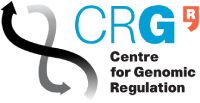Prof Maria Elena Torres-Padilla, Prof Edith Heard
No more applications being accepted
Competition Funded PhD Project (Students Worldwide)
About the Project
"ChromDesign” is a European innovative and interdisciplinary Research and Training network, which aims to characterize the impact of the 3D chromatin organization on gene regulation during cellular differentiation and in several human disorders, and to train junior researchers in the biomedical field, either in academia or in the private sector. The "ChromDesign" training programme will foster mobility across countries, disciplines and sectors. Through secondments and network-events, we will ensure that all ESRs have opportunities for exposure to different disciplines and environments: academia, industry, design and communication, hospitals, publishing, and non-for-profit funding entities. Most network training will be based around five summer and winter schools that combine hands-on research workshops, academic lectures as well as transferable skills, and innovation and entrepreneurship training sessions.
Description subproject ESR7:
Objectives:
Identify key molecular pathways that affect nuclear organisation and monitor the establishment of nuclear compartments in vivo, in the mouse embryo, using new imaging approaches.
Methodology
Analysis of nuclear compartments during mouse embryogenesis from the one-cell to the blastocyst stage, based on imaging and 3D-reconstruction in live embryos. The effects of over expression or RNAi of chromatin modifiers on such organisation will be tested by specific modulation of candidate pathways using the TGV method to track genomic regions. The methodology includes experimental manipulation of mouse embryos, molecular biology, genomics, live imaging and integrated image processing and modelling.
Expected Results
First analysis of live, in vivo imaging of newly formed nuclear domains in the mouse embryo. Analysis of the effect of such chromatin modifiers on chromatin openness and accessibility and their nuclear positioning, a pre-requisite for successful embryo development, and progression.
Planned Secondments:
CNAG-CRG, Spain (2 x 1 month): Modelling NGS data into comprehensive models of nuclear organisation. Establishment of NADs and LADs after fertilisation.
MILNER THERAPEUTICS INSTITUTE, United Kingdom (1 month): Learning drug development based on results.
Eligibility criteria:
• Applicants may be a national of a Member State, of an Associated Country or of any other third country.
• The candidate should hold an academic degree that enables her/him to undertake doctoral studies. Preference is given to applicants with MSc or equivalent degree.
• At the time of recruitment* by the host organisation, candidates must be in the first four years (full-time equivalent research experience**) of their research careers and not yet have been awarded a doctoral degree.
• At the time of recruitment* by the host organisation, candidates must not have resided or carried out their main activity (work, studies, etc.) in the country of their host organisation for more than 12 months in the 3 years immediately prior to the reference date.
PLEASE NOTICE THAT AN APPLICATION IS SOLELY POSSIBLE VIA THE ONLINE APPLICATION FORM (WWW.CHROMDESIGN.EU)
Funding Notes
• Depending on the hosting institute, individual projects start between November 2018 and August 2019.
Duration
• The positions are fully funded for 36 months by the European Comission under the H2020 Marie Curie Innovative Training Network Programme.
Salary
• Marie Curie ITNs provide a highly competitive salary to the ESR, including a competitive monthly living and mobility allowance and (if eligible) a monthly family allowance.
References
Jachowicz, J. W., Santenard, A., Bender, A., Muller, J. & Torres-Padilla, M. E. Heterochromatin establishment at pericentromeres depends on nuclear position. Genes Dev 27, 2427-2432, doi:10.1101/gad.224550.113 (2013).
Miyanari, Y., Ziegler-Birling, C. & Torres-Padilla, M. E. Live visualization of chromatin dynamics with fluorescent TALEs. Nat Struct Mol Biol 20, 1321-1324, doi:10.1038/nsmb.2680 (2013).
Borsos, M. & Torres-Padilla, M. E. Building up the nucleus: nuclear organization in the establishment of totipotency and pluripotency during mammalian development. Genes Dev 30, 611-621, doi:10.1101/gad.273805.115 (2016).

 Continue with Facebook
Continue with Facebook

